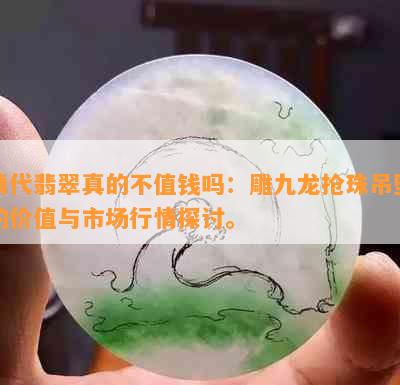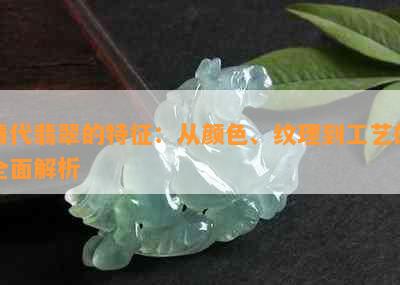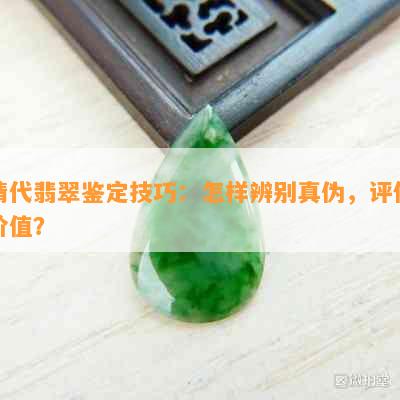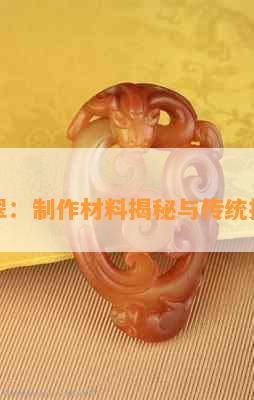从哪里来的?清代翡翠的制作原料及工艺详解
Title: Where Did They Come From? An In-Depth Look at the Raw Materials and Craftsmanship of Qing Dynasty Jadeite
Introduction:
The Qing Dynasty (1644-1912) is renowned for its exquisite jadeite craftsmanship, with numerous stunning pieces that continue to captivate audiences today. Have you ever wondered what raw materials and techniques were used to create these magnificent works of art? In this article, we delve into the origins of the raw materials and the intricate craftsmanship behind the creation of Qing Dynasty jadeite.
I. The Raw Materials of Qing Dynasty Jadeite
1. The Origin of Jadeite
The question, What is Qing Dynasty jadeite made of? often arises. Jadeite, a variety of nephrite, is a natural mineral that primarily consists of sodium and magnesium ions. The majority of the jadeite used in Qing Dynasty art pieces was mined in Myanmar, which was known as Burma during that period. Myanmar's mines provided a rich supply of high-quality jadeite, which was highly prized for its vibrant colors, intricate patterns, and durability.
2. Other Raw Materials
While jadeite is the primary material used in Qing Dynasty翡翠, other materials were also employed to enhance the overall aesthetic and functionality of the pieces. These included:
- Gold and silver: Used for inlays and decorative elements, adding a touch of luxury to the artwork.
- Semi-precious stones: Such as red coral, turquoise, and malachite, which were often incorporated into the designs for added visual interest.
- Porceln: In some cases, porceln was used as a backing material to provide stability and support to the jadeite.
II. The Craftsmanship of Qing Dynasty Jadeite
1. Carving Techniques
The intricate carvings found on Qing Dynasty jadeite pieces are a testament to the mastery of the artisans of the time. The following techniques were commonly employed:

- Relief carving: This technique involves carving the design into the surface of the jadeite, creating a rsed effect.
- Openwork carving: Also known as negative space carving, this technique involves removing material to create open, ry designs.
- Bas-relief carving: Similar to relief carving, but with a shallower depth, creating a more subtle effect.
- Intaglio carving: This technique involves carving the design into the surface of the jadeite, creating a sunken effect.
2. Polishing Techniques
The polishing process was crucial to achieving the smooth, lustrous finish that Qing Dynasty jadeite is known for. Artisans employed various techniques to achieve this:
- Abrasive polishing: Using abrasive materials, such as sand and stone, to grind and smooth the surface of the jadeite.
- Water polishing: Submerging the jadeite in water and using a polishing stone to achieve a high shine.
- Fire polishing: Applying heat to the jadeite to remove impurities and enhance its natural luster.
3. Assembly Techniques
The assembly of Qing Dynasty jadeite pieces was an intricate process that required precision and skill. The following techniques were commonly used:
- Mortise and tenon: A joinery technique that involves inserting a protruding tenon into a corresponding mortise hole to connect two pieces of jadeite.
- Pinning: Using metal pins to secure smaller components in place, ensuring stability and durability.
- Adhesives: In some cases, adhesives were used to bond smaller pieces of jadeite together, particularly in the creation of complex designs.
III. Conclusion
The question, What is Qing Dynasty jadeite made of? is a multifaceted one, as it encompasses not only the raw materials but also the intricate craftsmanship that brought these pieces to life. The combination of high-quality jadeite from Myanmar, along with other materials and expert carving, polishing, and assembly techniques, resulted in the creation of some of the most beautiful and captivating works of art in Chinese history.
Today, Qing Dynasty jadeite continues to be a sought-after collectible, admired for its beauty, craftsmanship, and historical significance. By understanding the origins of the raw materials and the techniques used to create these pieces, we gn a deeper appreciation for the skill and artistry of the artisans who brought these masterpieces to life.






